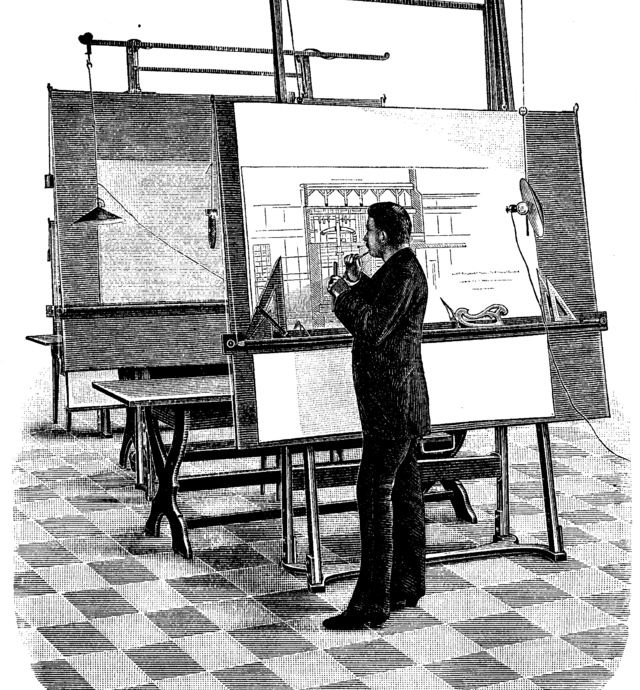The architecture profession continues to grow along with a gradually recovering economy, based on the results of the 2014 Survey of Architectural Registration Boards, conducted by the National Council of Architectural Registration Boards (NCARB).
The 2014 survey of U.S. jurisdictions indicates that there are 107,581 architects in the United States, a 1.6 percent increase from 2013. The number of architects has grown 3.1 percent since 2011.
“Our survey documents an architecture profession that is thriving,” said Michael J. Armstrong, CEO of NCARB. “NCARB will continue to spearhead changes in architectural licensing standards to support a growing architecture industry.”
Recent Bureau of Labor Statistics data also points to growing opportunities for architects in the American economy. Architectural and engineering services added 5,000 new jobs in September and 2,900 new jobs in October.
All states, the District of Columbia, Guam, Puerto Rico, and the U.S. Virgin Islands require individuals to be licensed (registered) before they may call themselves architects or contract to provide architectural services. Data collected for the fall 2014 Survey of Registration Boards are from all 54 U.S. jurisdictions and reflect registration levels from July 2013 through June 2014.
To become licensed, most jurisdictions require a professional degree in architecture and completion of an internship program. NCARB’s Intern Development Program (IDP) is a comprehensive program to provide interns with the knowledge and skills needed to practice architecture. All jurisdictions require completion of the Architect Registration Examination (ARE). Most states also require continuing education to maintain a license.
NCARB assists registration boards by leading the development and application of licensing standards and the credentialing of architects. The NCARB Certificate program is a program that allows architects to expedite reciprocity – the ability to offer architectural services in different jurisdictions after earning an initial license.
As part of the survey report, NCARB also compiles its own data on the number of reciprocal licenses earned each year, reporting 119,200 reciprocal licenses in 2014. That is down slightly—about 2 percent—from the previous year. “As the economy improves, NCARB suspects that many architects are finding new projects close to home without having to go to other jurisdictions,” Armstrong said. “We’ll keep an eye on this indicator as the economy moves forward.”
In total, the NCARB 2014 Survey reports that the 107,581 architects hold 226,181 licenses nationally. California reported the highest number of resident architects, at 16,618 total professionals, as well as the highest number of total registrations (resident plus reciprocal licenses) at 20,595.
Related Stories
| Aug 11, 2010
Citizenship building in Texas targets LEED Silver
The Department of Homeland Security's new U.S. Citizenship and Immigration Services facility in Irving, Texas, was designed by 4240 Architecture and developed by JDL Castle Corporation. The focal point of the two-story, 56,000-sf building is the double-height, glass-walled Ceremony Room where new citizens take the oath.
| Aug 11, 2010
Carpenters' union helping build its own headquarters
The New England Regional Council of Carpenters headquarters in Dorchester, Mass., is taking shape within a 1940s industrial building. The Building Team of ADD Inc., RDK Engineers, Suffolk Construction, and the carpenters' Joint Apprenticeship Training Committee, is giving the old facility a modern makeover by converting the existing two-story structure into a three-story, 75,000-sf, LEED-certif...
| Aug 11, 2010
Utah research facility reflects Native American architecture
A $130 million research facility is being built at University of Utah's Salt Lake City campus. The James L. Sorenson Molecular Biotechnology Building—a USTAR Innovation Center—is being designed by the Atlanta office of Lord Aeck & Sargent, in association with Salt-Lake City-based Architectural Nexus.
| Aug 11, 2010
San Bernardino health center doubles in size
Temecula, Calif.-based EDGE was awarded the contract for California State University San Bernardino's health center renovation and expansion. The two-phase, $4 million project was designed by RSK Associates, San Francisco, and includes an 11,000-sf, tilt-up concrete expansion—which doubles the size of the facility—and site and infrastructure work.
| Aug 11, 2010
Goettsch Partners wins design competition for Soochow Securities HQ in China
Chicago-based Goettsch Partners has been selected to design the Soochow Securities Headquarters, the new office and stock exchange building for Soochow Securities Co. Ltd. The 21-story, 441,300-sf project includes 344,400 sf of office space, an 86,100-sf stock exchange, classrooms, and underground parking.
| Aug 11, 2010
New hospital expands Idaho healthcare options
Ascension Group Architects, Arlington, Texas, is designing a $150 million replacement hospital for Portneuf Medical Center in Pocatello, Idaho. An existing facility will be renovated as part of the project. The new six-story, 320-000-sf complex will house 187 beds, along with an intensive care unit, a cardiovascular care unit, pediatrics, psychiatry, surgical suites, rehabilitation clinic, and ...
| Aug 11, 2010
Colonnade fixes setback problem in Brooklyn condo project
The New York firm Scarano Architects was brought in by the developers of Olive Park condominiums in the Williamsburg section of Brooklyn to bring the facility up to code after frame out was completed. The architects designed colonnades along the building's perimeter to create the 15-foot setback required by the New York City Planning Commission.
| Aug 11, 2010
Wisconsin becomes the first state to require BIM on public projects
As of July 1, the Wisconsin Division of State Facilities will require all state projects with a total budget of $5 million or more and all new construction with a budget of $2.5 million or more to have their designs begin with a Building Information Model. The new guidelines and standards require A/E services in a design-bid-build project delivery format to use BIM and 3D software from initial ...
| Aug 11, 2010
Opening night close for Kent State performing arts center
The curtain opens on the Tuscarawas Performing Arts Center at Kent State University in early 2010, giving the New Philadelphia, Ohio, school a 1,100-seat multipurpose theater. The team of Legat & Kingscott of Columbus, Ohio, and Schorr Architects of Dublin, Ohio, designed the 50,000-sf facility with a curving metal and glass façade to create a sense of movement and activity.







